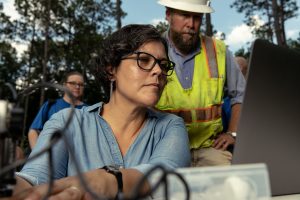In 1867, melting snow from the Smoky Mountains and four days of rain wrought Biblical destruction along the Tennessee River Valley. In Knoxville, Tennessee, the flooded river took out the town’s only bridge and stranded the residents on a hilltop downtown. Chattanooga, Tennessee, was nearly wiped off the map before the flood waters swelled downstream in rural parts of Alabama.
The Tennessee River crested 58 feet above normal in Chattanooga, nearly double the recognized flood level. It’s the high water mark, if you will, for floods along the middle Tennessee River. In scientific jargon, it’s the flood of record.

But what is a record? At its most basic, a record is data collected and stored, usually by humans. Modern methods of recording weather and streamflow, at best, go back 150 years in a few areas in the Southeastern United States. Historical records, such as newspapers, might reach 200 years into the past, again, in spots.
Oral histories, particularly those passed by Native Americans, can go back centuries, but pegging them to specific years can be difficult. In fact, newspaper accounts from near the 1867 flood record some Native Americans with knowledge of a larger flood perhaps 100 years prior. READ MORE